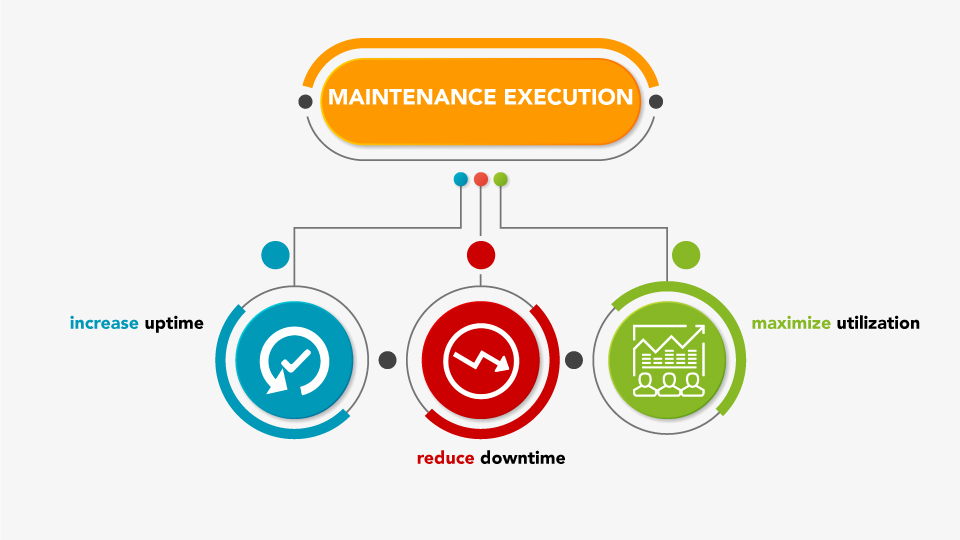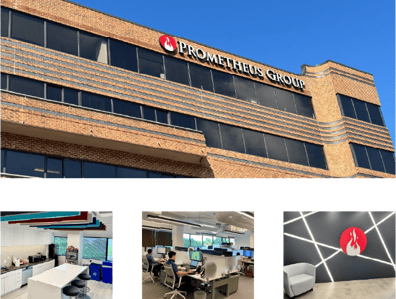Increase Uptime, Reduce Unplanned Downtime & Maximize Resource Utilization…
Easy, right? Not so much.
Maintenance organizations across the globe are tasked with the above all the time, while being told, to “Reduce Maintenance Costs” along the way.
This begs the question: “How can you be expected to do more with less?” And, “how long until you start to see the results of your actions?”
While the answer may vary based on the company and the industry, the overall theory is that organizations need to figure out how to work smarter with the people they have.
In Asset Management, there is a common saying along the lines of, “The Right Work on the Right Asset with the Right Tool and the Right Resource at the Right Time”.
This is the essence of productivity, which when broken down, is essentially the same as Increasing Uptime, Reducing Downtime, and Maximizing Utilization.

In order for an asset to be productive, it must be up and running – there’s really no simpler way to put it. This causes a large emphasis to be placed on increasing the uptime of the asset.
How to Increase Maintenance Uptime
In simplistic terms, uptime is the time in which a machine (asset) is in operation.
This means that while an asset is operational, it is able to produce output – or in the case of most businesses – revenue-producing activities.
Currently, many companies struggle with keeping their assets running at optimal rates to ensure that production meets the goals put forth by management.
Therefore, it is paramount that asset uptime is optimized to meet these goals.
And, as you might imagine, the best way to increase uptime is to reduce downtime.
How to Reduce Maintenance Downtime
The opposite of uptime, is when the asset is not in operation – and therefore no output is being produced and revenue-producing activities come to a halt.
Now, not all downtime is bad and some downtime is needed in order to service assets to prolong their life. Downtime can be separated into two different categories: Planned and Unplanned.

Planned Downtime is the necessary maintenance of assets to prolong the life and production producing capability. When planned properly, maintenance work can be done during off-peak hours and in controlled settings. This type of downtime is planned in advance and the proper tools and resources can be assigned.
Unplanned Downtime, on the other hand, is the nemesis of maintenance organizations around the world. These incidents create havoc and ultimately can end up costing a company millions of dollars every year. Unplanned downtime occurs when an asset fails without warning – perhaps due to a lack of preventive maintenance being done or perhaps due to a faulty part. No matter the cause, the elimination (or reduction) of unplanned downtime should be a high priority for all.
In recent years, there has been a shift from reactive maintenance to preventive maintenance, with many companies now looking towards predictive maintenance. These trends have yielded positive results and are playing major roles in the reduction of unplanned downtime instances.
Further to planned and unplanned downtime, there are also varying degrees to which the downtime can affect a company’s operations.
For example, if a critical asset is down, there is far more urgency to have that asset repaired than if a small tool breaks down. This makes a company’s asset criticality assignments a critical part of the maintenance process. For more info on asset criticality, you can refer to our asset criticality whitepaper.
Moving past defining what uptime and downtime are, it’s time to take a look at how to become more efficient in both areas.
At the onset of this post, we referred to the fact that companies around the world expect a lot out of their maintenance organizations, which means that everyone within the maintenance organization needs to be operating at their full potential or capacity.
This brings us to the idea of Maximizing Resource Utilization.
How to Maximize Maintenance Resource Utilization
In Doc Palmer’s book, ‘Maintenance Planning and Scheduling Handbook’, he discusses how in an 8-hour work day, after lunches, breaks, etc., the absolute most maintenance time possible, is 6.5 to 7 hours.
However, if your organization is not doing any planning or scheduling, Doc’s studies show that you get roughly 2-3 hours of useful wrench time from your maintenance team.
He also shows that when you implement a basic scheduling method, wrench time almost doubles.
That means, by implementing some form of planning and scheduling method, you can improve resource utilization from 25% to 50% – a 100% increase.
This is no easy task. There are so many variables that go into scheduling crews for the various jobs, not to mention scheduling the right people for the right job with the right tools.
If that’s not difficult enough, factor in vacations, sick call-ins and other unscheduled factors that affect a schedule and you’ve got yourself quite a puzzle.
It used to be feasible to create manual schedules with tools like Excel but that has now become the exception rather than the rule.
The majority of companies today have any number of systems that all need to talk to each other to ensure data isn’t being lost and tasks aren’t being duplicated.
This has created a need for dedicated maintenance scheduling tools to allow the Scheduler to schedule accurately and efficiently, eliminating duplicate work and errors along the way.
Prometheus Planning & Scheduling was built specifically to help organizations realize the above. It has been developed over the years with leading organizations to meet the specific criteria and functionality needed for maintenance organizations to easily plan and schedule their maintenance teams.
Increase Maintenance Uptime and Maximize Your Resource Utilization
It’s no easy feat creating efficiencies within a maintenance organization.
It’s even harder to do so when there is an expectation to reduce maintenance costs along the way.
Companies who are able to do this successfully are usually companies that adapt to new trends, adopt new technologies, have a devoted and knowledgeable staff and are willing to invest in now in order to benefit the future.
Prometheus Planning & Scheduling was built on the premise of helping maintenance organizations to create efficiencies by better scheduling their resources in order to reduce unplanned downtime and increase asset uptime.
Speak with one of our experts to learn how the Prometheus Platform can help increase your assets’ uptime.



